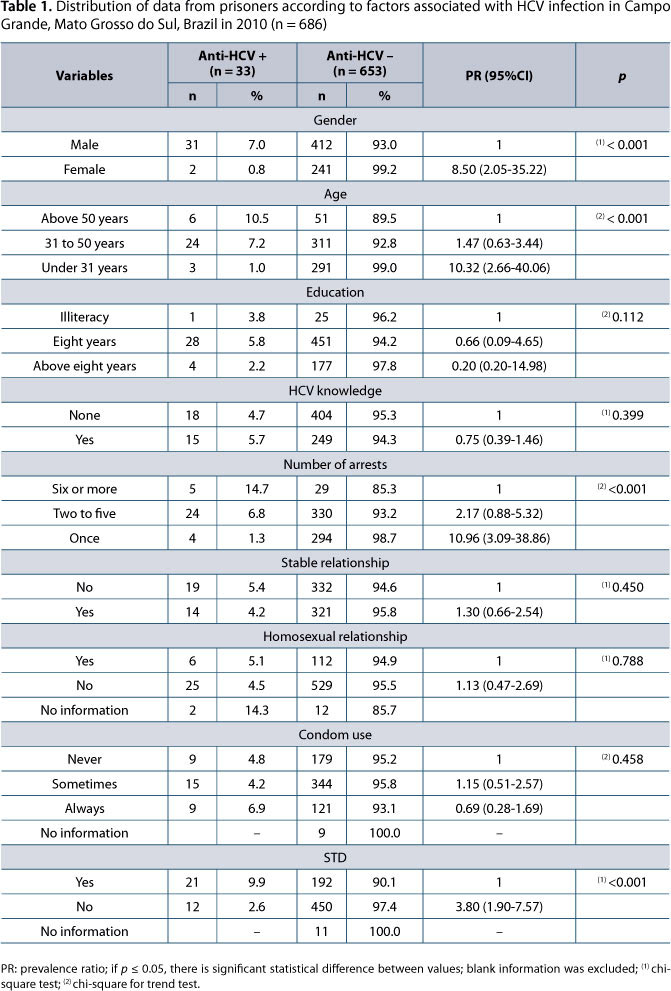In Mato Grosso do Sul state, Brazil, the number of prisoners has increased in the recent years and the control of hepatitis C virus (HCV) has become more complex. The aim of the present study was to estimate the prevalence and identify the genotypes of HCV in prisoners as well as the factors associated with this infectious disease. Thereby, 443 men and 243 women from prisons were interviewed and subjected to blood collection. Anti-HCV reactive samples were analyzed by RT-PCR and genotyped. The overall seroprevalence of HCV infection was 4.8% (95%CI: 3.4 to 6.8%). Furthermore, the prevalence was higher in: men, injecting drug users, tattooed persons, those who were more than 50 years old, individuals who have been arrested multiple times, people with previous history of sexually transmitted disease (STD), persons who received blood transfusions or those with HIV/AIDS. The prevalence of RNA HCV by PCR was 3.0% (95%CI: 1.7 to 4.2%). Moreover, the coinfection of HIV and HCV was 33.3%. In addition, genotype 1 was the most frequent (85%) followed by genotype 3 (15%). The screening strategy for HCV and other infectious diseases in inmates is important as it establishes an early diagnosis, opportunity for treatment and allows the breaking of the transmission chain.
hepatitis C; genotype; polymerase chain reaction; epidemiology; prisoners




